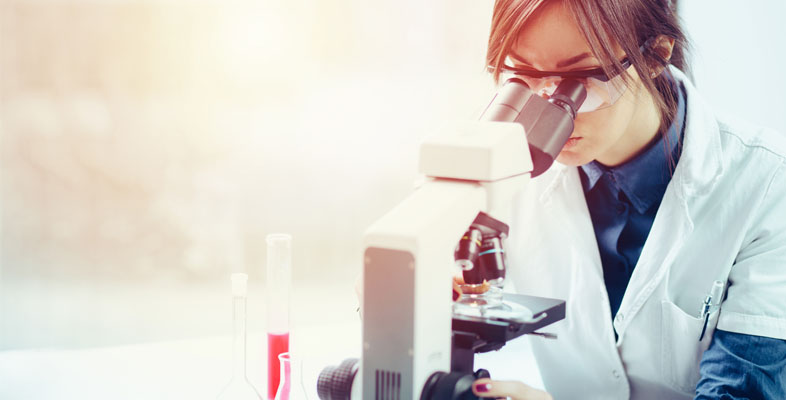1.3 Skin sections
Next you’ll examine structures in the skin in more detail via the virtual microscope.
Activity 1
Open the virtual microscope [Tip: hold Ctrl and click a link to open it in a new tab. (Hide tip)] . (Remember, you may find it easier to open the virtual microscope in a new browser window or tab, to make it easier to refer back to these instructions.)
Load Slide 1 (from the ‘Week 2’ collection) onto the stage. This sample is a section through the skin of a fingertip. Spend a few moments looking at the slide, and making use of the legend provided.
You should have noticed that the epidermis is particularly thick and ridged towards the right-hand side of the sample. In the skin the epithelial cells are called keratinocytes because they form keratin, the thick impervious layer of the skin surface.
You may have also observed in this sample that the skin of the fingertips does not have hairs, but it does have sweat (eccrine) glands and a high density of sensory organs in the dermis. These sensory organs include structures such as the Pacinian corpuscles, which specifically respond to touch and pressure, enabling us to feel the external environment.
Finally for this slide, spend a few moments trying to identify the connective tissue of the dermis and some blood vessels.
Now turn your attention to Slide 2 from the same collection. This is from pigmented skin.
Identify the cells in the epidermis which have high levels of the pigment melanin. Also, compare the thickness of the epidermis on this section with that on Slide 1. You should see that the contrast between their respective thicknesses is significant.
